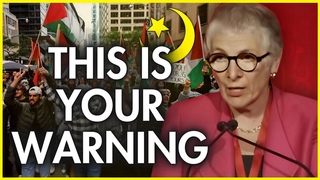In south Lebanon, Israel’s army dares not enter territory it once captured
On March 23, 2024, Dimitri Lascaris visited the Beaufort Castle in south Lebanon. The Castle, which is known in Arabic as Qal’at ash-Shaqif, lies near Lebanon’s southeastern border with Israel. From the ruins of the Castle, the northern Israeli settlement of Metula is visible. The Castle is also near the predominantly Shia Muslim, Lebanese city of Nabatieh.
Located 717 meters above sea level, Beaufort Castle commands large parts of the Upper Galilee and South Lebanon. By the 1982 Lebanon war, it had become a symbol of Palestinian resistance to Israeli aggression. Yasser Arafat of the Palestinian Liberation Organization, and former Israeli Prime Ministers Menachem Begin and Ariel Sharon, visited Beaufort Castle before and after the battle of Beaufort Castle in June 1982.
While standing atop the summit of Beaufort Castle, Lascaris interviewed Lebanese journalist Hadi Hoteit. Hoteit described recent attacks by Israeli forces on Nabatieh and the surrounding villages of south Lebanon. According to Hoteit, Israeli forces have repeatedly struck civilian targets in south Lebanon since October 7, 2023, when Palestinian militants attacked Israeli military bases and settlements near the border of Gaza. Lascaris and Hoteit heard several explosions during their interview at the Castle.
After visiting Beaufort Castle, Lascaris and Hoteit travelled by vehicle to Nabatieh. There, they inspected the remains of two civilian structures destroyed by Israeli airstrikes within the past two months. In one of those airstrikes, Israeli forces massacred a Lebanese family of six, including four children. Since the 1982 Lebanon war, Israeli forces have bombed and shelled Nabatieh repeatedly, killing civilians there on multiple occasions.























